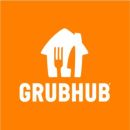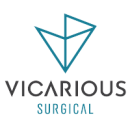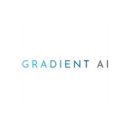
The need for software engineers isn’t going anywhere anytime soon. That’s according to the U.S. Bureau of Labor Statistics, which reported that employment of software engineers is projected to grow by 22 percent between 2019 and 2029 — much faster than the average occupation. Whether you’re a seasoned engineer looking for a fresh challenge or just starting your professional career, opportunity abounds.
We checked in with nine local companies that are currently hiring for a variety of engineering positions. From a hardware company that designs robots to perform minimally invasive surgeries to a fintech company that provides same-day funding to small businesses, there’s ample methods to hone your engineering skills.
Read on to learn a little bit about the companies’ tech stacks, recent projects and what makes their cultures unique.
Vestmark enables financial advisors and institutions to efficiently manage and trade their clients’ portfolios through its proprietary SaaS ecosystem.
Vestmark’s tech stack: “Vestmark has a handful of different products built with multiple programming languages, databases and other technologies underpinning them,” Lough said. “Our core product is a Java Spring application with a ReactJS front end that incorporates libraries and technology like Express and Postgres. Some of our applications and our engineering infrastructure run in AWS. Tools such as Terraform are becoming more and more integral to our success as we move further into the cloud. I even find myself using long-time favorites like Vim over newer tools because that’s what I am comfortable with.”
Building reusable components: “We’re working on building reusable cross-platform components and services that can be used within the various applications in our platform including flagship products and potential new product ideas. It’s technically challenging and requires collaboration across a multitude of scrum teams, development efforts and product lines. Because we have many features that need to be incorporated into the new components, we are building a new foundation to enable us for years to come.”
Tackling challenges together: “In my career, I have never been a part of an organization that has such a strong team culture. Everyone really lives the company’s core values. The positive energy, level of transparency and managerial support for the engineers is second to none. Every manager is approachable and we operate with sincerity and honesty. We tackle challenges together and celebrate those victories as a team. We know that a diverse group of people united by a shared purpose and a ‘we before me’ mindset can achieve greatness far beyond what they could individually.”
Through its no-code platform, Tulip aims to empower and digitally transform frontline operations for manufacturers by improving the productivity of their teams, the quality of their output and the efficiency of their operations.
Tulip’s tech stack: “Tulip began as a Meteor-based app, but as its complexity and code size has grown, we’ve started initiatives to move to a more modern and scalable infrastructure,” Beckwith said. “We’ve been replacing Blaze templates and Meteor Publications with React and Redux, Iron Router with React Router, Meteor’s login system with a more flexible custom system that better supports enterprise configuration and more.”
Updating old code: “I’ve been adding the concept of workspaces to Tulip, which divides the data and user access of a Tulip instance along lines defined by the customer. This project touches pretty much every corner of the Tulip codebase as we’ve had to make decisions on how different users and assets should be given access in different workspace contexts. The project is much needed for our larger enterprise customers, who have huge amounts of data and users they want to manage and organize. It’s been really interesting to dig deep into some of the oldest parts of Tulip’s code and update them to support this challenging multi-tenant access model.”
Monthly Kaizen meetings: “During our monthly Kaizen meetings, we spend time reflecting on both the good and bad aspects of our work from the past month, and have an open and honest discussion about what we can do to improve the bad things and capitalize on the good things. I’m always pleasantly surprised how honest our team is when it comes to recognizing what needs improvement and coming up with actionable solutions.”
Grubhub is an online and mobile food-ordering and delivery marketplace. The company partners with 245,000 restaurants in 4,000 U.S. cities.
Grubhub’s tech stack: “The search core has two stacks — one for generating the data for searching and a second for querying, ranking and computing the search result for our diners,” Li said. “We use Apache Spark and Amazon EMR to ingest restaurant data, feature data and diner and restaurant ranking model data. We also structure all these data points into our Cassandra, Memcache and Elasticsearch indices. At runtime for each search, we query Elasticsearch, use TensorFlow, and diner and restaurant ranking models to rerank results. After that, we retrieve all other data for these restaurants. For each request, we collect the request and results to Event Hubs, which provides information for future feature data, ranking model data and more.”
Influencing the relevancy of search results: “The query-rank-compute is the modern way of search, as it gives data scientists full access and control to influence the relevancy of search results. Our team worked hard on developing it for Search API and it’s been a success since launch. Now, I’m modernizing this stack by bringing it to Autocomplete API. On top of implementing something new, I get to remove a lot of old codes and fix some bugs.”
Gaining new expertise: “It’s easy for engineers to be passionate about building new things and staying focused on ‘the new.’ But, it’s equally important to continue maintaining existing technologies, which is something our team places a lot of value on. Additionally, our team is very strong technically, and together, we’ve integrated and led quite a few technology implementations such as Elasticsearch and TensorFlow — gaining new expertise with each implementation.”
Vicarious Surgical works to improve best practices and outcomes for surgeons performing minimally invasive surgery by offering them proprietary, human-like surgical robotics combined with virtual reality.
Vicarious Surgical’s tech stack: “My group works on advanced sensing, data and AI,” Santini said. “It’s a world with complex tools that are interdependent on another and require a precise order of installation. So, having a master tool that allows us to create dependable and replicable containers of the environment we work in is fundamental. I find that Docker technology is capable of solving a lot of our needs. For example, its flexibility during production software deployment. We can tightly control what is in the Docker container and optimize it to match the needs of the product, so the new robots that are coming out of our production line already have the correct environment setup.”
AI that makes informed decisions: “Our most challenging project is to provide surgeons with a unified and robust picture of what is currently happening inside the abdomen of the patient and highlight anything that requires their attention. Each sensor in the robot is producing a stream of information that is filtered, processed and fused together. Each stream represents a small piece of percept of the much larger abdominal space and robot state. The challenge is to define a supporting infrastructure that gives the AI the ability to integrate all these different bits of information in order to make informed and explainable decisions. All this information is then given to the surgeon who, in turn, will make decisions about patient treatment.”
Diversity of thought: “My vision of this group is very simple: background and gender diversity. I am working to create a diverse group of individuals who are looking at the challenges we have from many points of view. The projects and challenges that we have at Vicarious Surgical require a wide array of theoretical and practical approaches and tools that use AI in its entirety, both traditional and modern. The composition of the group should reflect this view. It’s important for each member to bring their different backgrounds and ways of thinking to solve engineering problems.”
Stavvy aims to empower financial institutions to digitize their traditional paper transactions. The company integrates remote signing and videoconferencing technologies to help create a faster, more accurate lending experience.
Stavvy’s tech stack: “Our back end services are primarily in Python, leveraging the FastAPI framework, with some growing amount of Java in there,” Zelga said. “Our front-end code is all React written in TypeScript. We lean on Terraform to handle our infrastructure provisioning, and run all of our services on AWS. Postgres, Redis and Amazon DynamoDB round things out. We write our test suites using pytest and Cypress, and currently are using CircleCI for our CI/CD pipeline.”
Automating processes: “We recently spent several months working on an integration with a large national bank to allow them to programmatically transfer loan documents and scheduling metadata into our system and automate the creation of meetings with their clients. I was tasked with getting the data ingested into our system and automating the meeting creation. Some of the tools I worked with included Amazon’s S3 notifications as well as its SNS, SQS and Lambda functions. I really enjoyed how this let me broaden my experience working with other tools.”
Tackling impactful architecture changes: “We decided early on, in lieu of having a dedicated software architect in charge of everything, to put together an Architecture Board. The Board has provided us with a way to discuss potentially impactful changes to our software architecture as well as begin to establish engineering standards and best practices. We welcome and encourage any individual across the org to submit a request or proposal if they have an idea about how we can do something better. We have a truly collaborative spirit here, where folks are eager to jump in and help one another out, and we’re hoping to maintain that as we continue to grow the company.”
Forward Financing provides fast, flexible working capital to small businesses across the country. Through its proprietary technology, the company is able to provide same-day funding to business owners who need quick access to working capital.
Forward Financing’s tech stack: “At Forward Financing, we use a technology stack that includes Ruby on Rails, React JS, TypeScript and Elixir,” Paiva said. “I’m personally a big fan of Rails, and I also love using TypeScript because of the changes this framework introduces to the JS environment. For example, I love the static typing, type annotations and a great integration with both object-oriented and functional programming.”
Improving the pre-qualification process: “Recently, I’ve been working on projects to rebuild essential parts of our proprietary technology and CRM. We’re continuously working to reduce error points and make the user interface faster and easier to use. One recent project focused on improving our pre-qualification process. For this project, we did a deep analysis of the current workflow identifying the areas in which we can improve and decided to move away from Redux and mainly use TypeScript and React Hooks.
“I love the final stages of development when the product team approves the changes and we are ready to send them to production. We have completely transformed our tech, so I cannot wait for our team to incorporate it in their daily sales, underwriting and customer support activities.”
Part of the team: “The adaptability and supportive culture set Forward Financing’s tech team apart from other teams I’ve worked on in the past. When a complex problem comes up, we all collaborate to find a solution. It’s a blameless culture where we’re all striving to improve our skills and help our team members work more efficiently. I joined Forward as a remote software engineer, but I’ve always felt close to my colleagues because of their great communication and commitment to making me feel like part of the team.”
Through AI and machine learning, Gradient AI aims to automate the insurance industry. Its software-as-a-service platform offers solutions for underwriting, claims management and business processing.
Gradient AI’s tech stack: “The core of our tech stack is AWS, Linux, MySQL, Postgres and Python,” Riley said. “We use a number of services in AWS that I’ve found to be very helpful. Especially for greenfield projects, being able to abstract away some of the infrastructure concerns while prototyping has been really nice. While perhaps not as trendy, Unix tools are another favorite of mine. They play a small but important role in our data pipelines and I’ve found them invaluable for debugging.”
Migrating its data warehouse: “One ongoing project that’s been both interesting and challenging is migrating our data warehouse from MySQL 5.6 to Postgres. Like any technology, Postgres has some quirks that we’re adapting to, but it has a lot of additional functionality to offer as well. That additional functionality has enabled us to revisit some of our past design decisions and I’m excited about the improvements we’ve been making throughout the project to our ETL tooling and processes.”
Cross-functional teams: “Something I really like is that our teams are cross-functional. The data scientists, data engineers, and software engineers working on a project collaborate very closely, so I never feel like work has been thrown over a wall between the specialties. The close collaboration also means there are a lot of opportunities to learn from and share knowledge with coworkers who have different areas of expertise.”
Starburst Data helps users access their data from anywhere so they can improve their decision-making processes. The software queries data across any database, increasing security, support and management practices.
Starburst Data’s tech stack: “At Starburst, our products are centralized around the open source data query engine, Trino (formerly known as PrestoSQL),” Pickering said. “Development on it began about eight years ago, but there’s still a ton of activity on the project still, both in terms of our active development, as well as throughout the community. Aside from that, we’re really big into Kubernetes these days. Virtually all of our deployments and our new SaaS platform, Galaxy, heavily utilize k8s.”
Working on user interface: “Trino, and our enterprise version, Starburst Enterprise, is a complex and powerful tool that’s widely used across many, many businesses. But it usually requires management by an engineering team. With Starburst Galaxy, we’re seeking to remove the complexity and make it much more broadly useful and user-friendly to pilot and adopt. But, because of Trino’s ability to be a decentralized query engine, dealing with all the different ways customers can leverage it is pretty uniquely challenging, especially if you start talking about bridging cloud environments. A lot of the complexity we’ll be tackling hasn’t really been done before and at this scale, so it’s daunting but also exciting.”
A sense of community: “This is the first job I’ve taken at a company that builds its business on top of an open-source project. There’s something really great about being part of an open-source community with engineers from all over the globe who are united by their love of what the software does. It’s really magical and special to see that on a daily basis. In fact, a lot of people decide to work with us because they love Trino, which (as a people manager) is awesome to see. Someone can actually be part of building something they’ve always wanted to be paid to work on.”
3Play Media is a software company that provides closed captioning, transcription, translation and audio description to customers in higher education, media and entertainment, enterprise and government. The company aims to simplify the process through flexible APIs, video platform integrations and a user-friendly account system.
3Play Media’s tech stack: “For our customer-facing application, we are using Ruby on Rails as our back end (we’ve recently upgraded to v6!),” Indap said. “Our front end, until about two years ago, was primarily Vanilla JavaScript and Haml templates. In the years since, we’ve started building out a lot of new features using React and GraphQL. Our database is a combination of MySQL and MongoDB, the latter being used to store metadata for transcripts. We use GitHub’s Resque as our queueing system.”
Captioning live events: “I’m part of a team that’s currently building out a contractor interface for captioning live events. There are a lot of moving pieces to the project, and it certainly has its challenges, but we’ve been getting through those one at a time. The challenge we’re currently trying to get a handle on is getting the latency between the words being spoken and the relevant captions being generated down to the industry standard. The thing I’m enjoying most about this project is the way we as a team — product, design and developers — are tackling the challenges thrown at us.”
Intelligently pluralizing nouns: “A team tradition that is definitely unique from any other team I’ve worked on is pluralizing words using ‘z.’ That by itself isn’t much, but a random ‘I’m too lazy to do this, I wish there was a bot which converted all of my pluralz for me,’ turned into a weekend project for a colleague, and we had a SlackBot! This bot, which started off as a Regex-based replacer, now uses a part of speech to intelligently pluralize nouns. And instead of replacing the ‘s’ with a ‘z’ for a plural, the bot now detects if the word is plural, and if so, takes the singular form of the word and appends a ‘z.’ This turns data into datumz! These plurals are sometimes a welcome break on a really busy day.”























